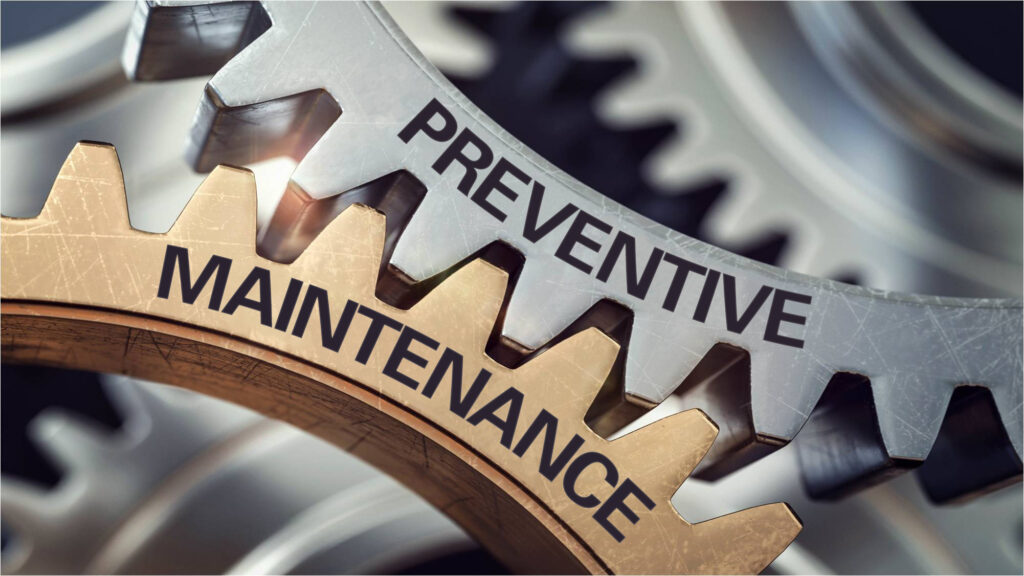What is Preventive Maintenance?
Preventive maintenance (PM) is a proactive strategy designed to keep equipment, machinery, and systems in top condition by performing regular inspections, cleaning, and servicing before issues arise. Unlike reactive maintenance, which only addresses problems after they occur, preventive maintenance relies on a predetermined schedule or usage metrics to ensure smooth operations and avoid costly breakdowns. This approach is essential across industries like manufacturing, healthcare, and transportation, where equipment reliability is critical.

How Preventive Maintenance Enhances Performance, Reduces Risk, and Optimizes Costs
Preventive maintenance delivers measurable benefits in three key areas: performance, risk management, and cost efficiency.
Boosting Performance with Preventive Maintenance
Preventive maintenance improves asset performance by minimizing downtime and ensuring reliability. Through techniques like condition monitoring—using sensors and predictive analytics—early signs of wear are detected, preventing unexpected failures. For instance, in a manufacturing plant, regular preventive maintenance on machinery ensures uninterrupted production, enhancing operational efficiency. A line graph titled Asset Performance Over Time could illustrate this: one line shows stable performance with preventive maintenance, contrasted with another showing frequent dips from reactive repairs.
Reducing Risk Through Preventive Maintenance
Preventive maintenance mitigates risks by identifying potential hazards before they escalate. Regular inspections and upkeep prevent equipment failures that could endanger workers or the environment. In the oil and gas industry, for example, preventive maintenance on pipelines can catch corrosion early, averting leaks and disasters. A flowchart, Risk Mitigation Through PM, could outline the process—Asset Assessment → Scheduled Inspections → Maintenance Actions → Monitoring—highlighting a potential 25% reduction in safety incidents with preventive maintenance.
Optimizing Costs with Preventive Maintenance
Preventive maintenance saves money by extending equipment lifespan and reducing emergency repair expenses. The U.S. Department of Energy reports that preventive maintenance can cut maintenance costs by up to 30% and boost equipment longevity by 20–40%. By scheduling tasks proactively, businesses avoid the high costs of downtime and replacements. A bar chart, Cost Comparison: PM vs. Reactive Maintenance, could show lower costs with preventive maintenance versus the steep expenses of reactive approaches.
Real-World Example: Hospital Fleet Preventive Maintenance
A Northern California hospital system with over 850 workstations on wheels (WOWs) showcases the power of preventive maintenance. Initially relying on annual checks, the hospital faced frequent technical issues and downtime. After adopting a frequent preventive maintenance schedule with TouchPoint Medical, they saw:
- Fewer helpdesk tickets for cart issues.
- Faster repair times.
- Reduced service interruptions.
This case proves how preventive maintenance enhances reliability and efficiency in high-stakes environments like healthcare.
Preventive Maintenance Defined
Preventive maintenance (PM) is a systematic method to maintain assets, preventing unexpected failures and ensuring optimal performance throughout their lifecycle. It involves proactive steps—inspections, lubrication, and part replacements—based on schedules or usage data. According to The Benefits of Preventive Maintenance | Safety Culture, PM minimizes downtime cuts repair costs, and improves safety, making it indispensable for operational continuity.
The Future of Preventive Maintenance
Preventive maintenance is evolving with cutting-edge technologies like AI, IoT, and digital twins. These tools enable real-time monitoring and predictive insights, taking PM beyond basic checks to a strategic asset management approach. This shift enhances efficiency, safety, and competitiveness in industries facing complex demands.
Why Preventive Maintenance Matters
Preventive maintenance isn’t just a technical task—it’s a strategic investment. By improving performance, reducing risks, and optimizing costs, PM ensures assets remain reliable and cost-effective. The hospital WOW example demonstrates its practical impact while emerging tech highlights its future potential.
Table: Key Benefits of Preventive Maintenance
| Aspect | How PM Helps | Example Benefit |
|---|---|---|
| Performance | Reduces downtime, boosts efficiency | Continuous production in manufacturing |
| Risk Reduction | Prevents hazards, avoids failures | Stops pipeline leaks in oil and gas |
| Cost Optimization | Extends lifespan, lowers repair costs | Saves up to 30% on maintenance, per DOE |
This table encapsulates why preventive maintenance is a game-changer, offering a clear, concise summary for readers and search engines alike.
